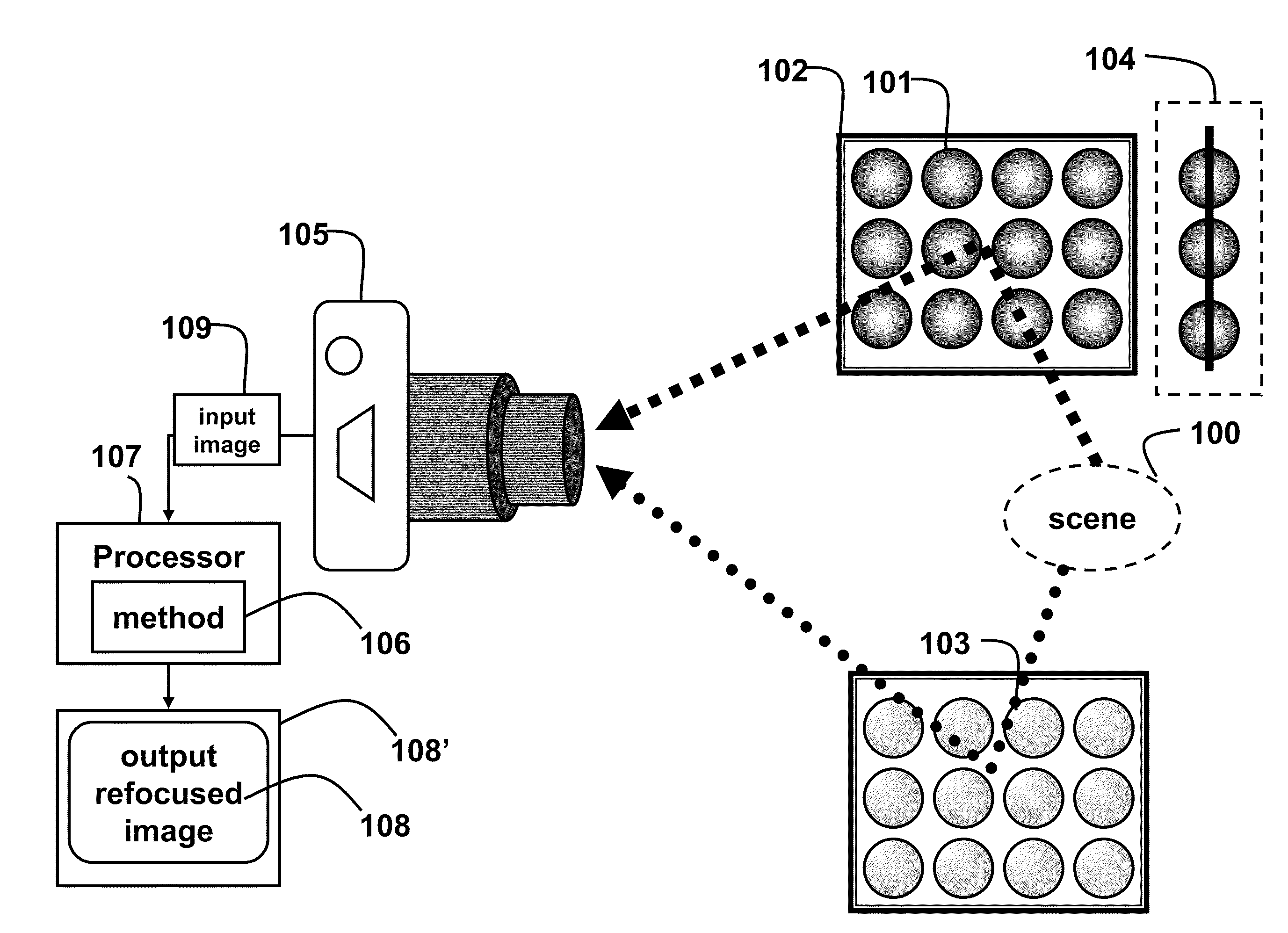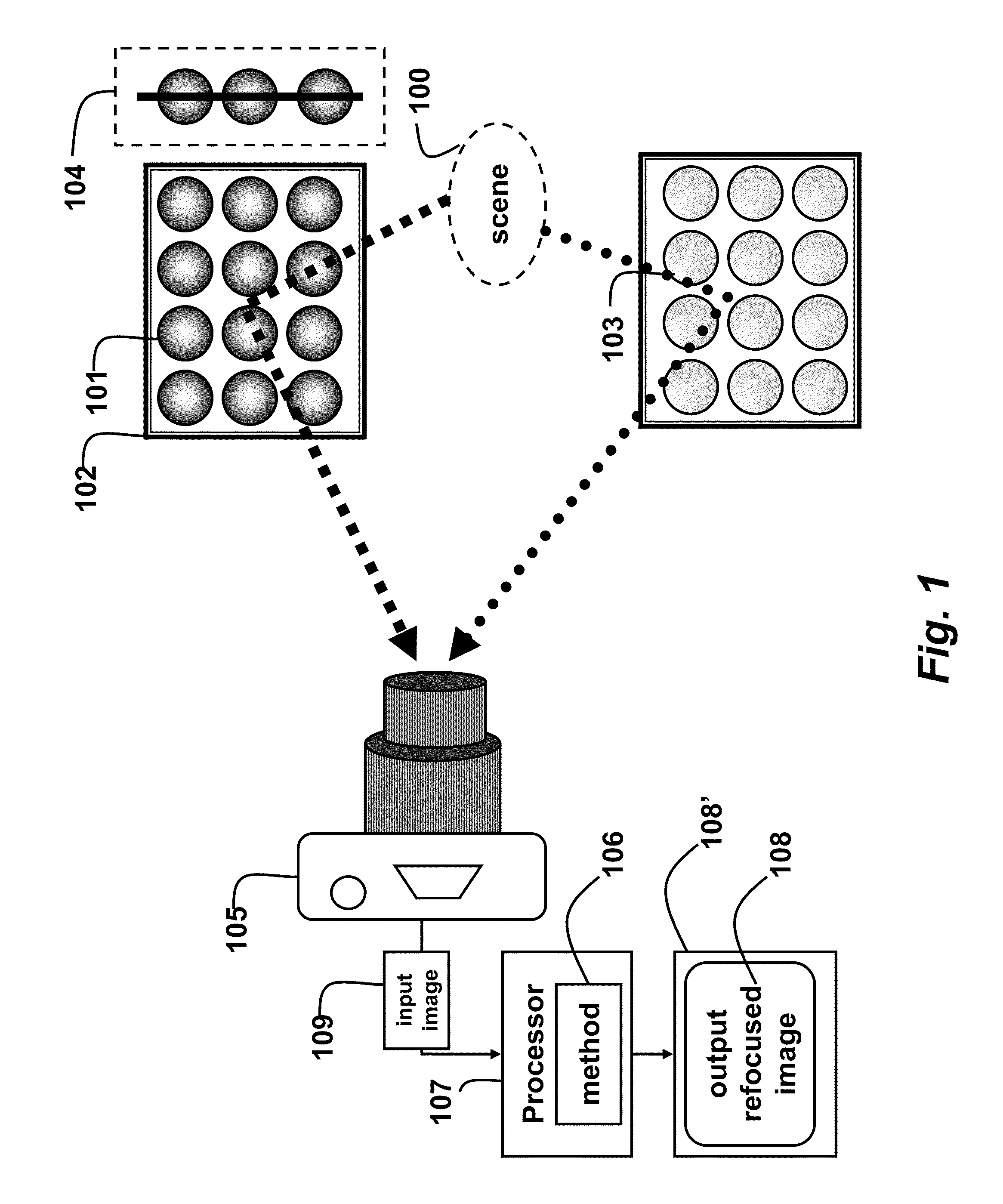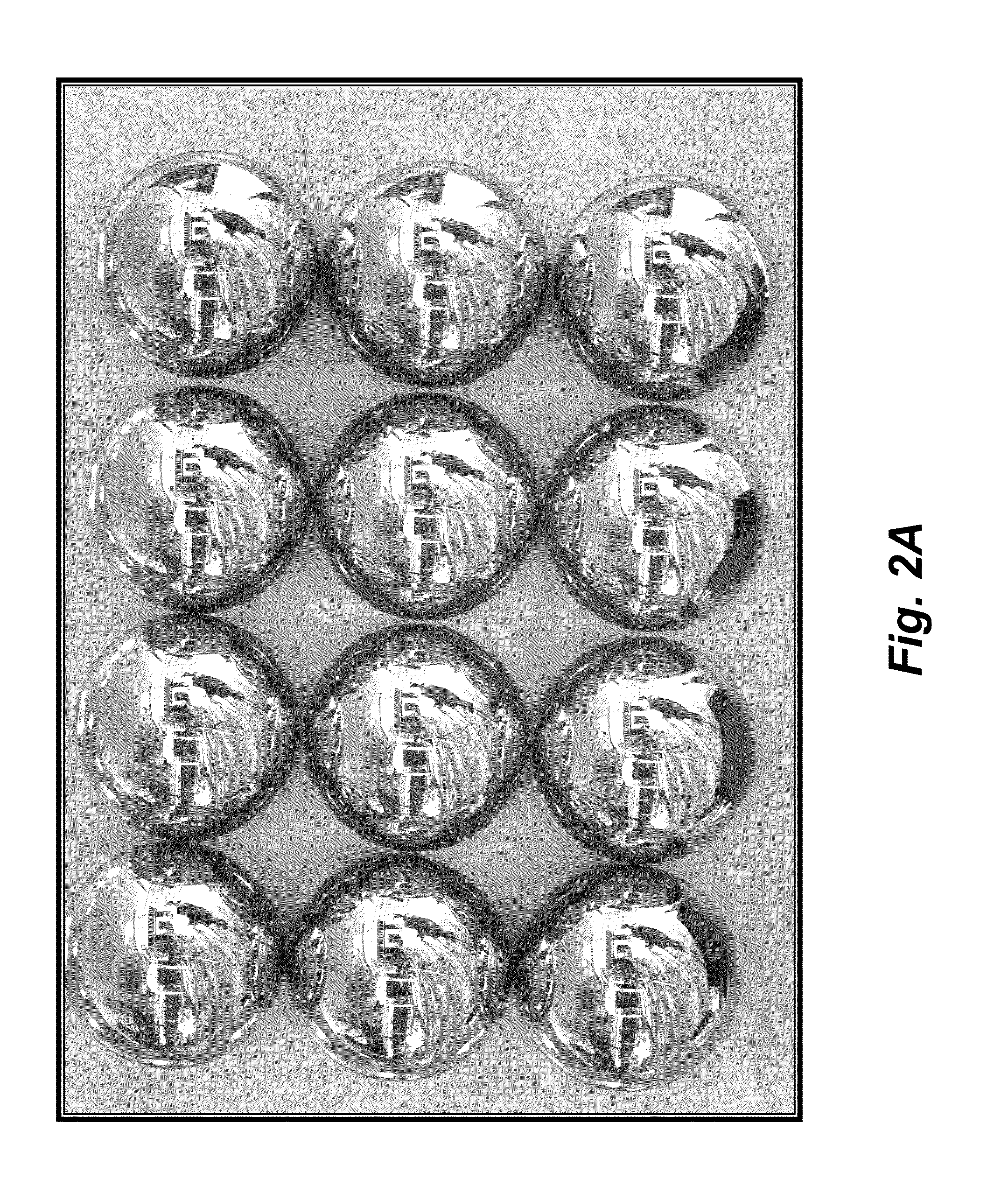Digital Refocusing for Wide-Angle Images Using Axial-Cone Cameras
- Summary
- Abstract
- Description
- Claims
- Application Information
AI Technical Summary
Benefits of technology
Problems solved by technology
Method used
Image
Examples
Embodiment Construction
Method and System Overview
[0028]As shown in FIG. 1, the embodiments of the invention provide a method and system for refocusing for an output image from a single image acquired by a conventional stationary camera with reflective or refractive elements. We can use an array of reflective spheres (e.g., mirror or steel balls) 101 arranged on a planar surface 102 for a reflective setup, or an array of refractive spheres (e.g., glass or acrylic balls) 103 for a refractive setup. By using spheres of different size, our design can be easily scaled to different scene scales. We use an array of spheres of 0.25″ radii for small tabletop scenes, and 0.5″ radii for room-size, or outdoor scenes. Inset 104 shows a side view of the array. The array can be regular, irregular, random, two- or three-dimensional.
[0029]A camera 105 acquires a single input image 109 of a scene 100 as observed in the reflective or refractive spheres. That is, the image shows the scene reflected in each reflective sphere ...
PUM
 Login to View More
Login to View More Abstract
Description
Claims
Application Information
 Login to View More
Login to View More - R&D
- Intellectual Property
- Life Sciences
- Materials
- Tech Scout
- Unparalleled Data Quality
- Higher Quality Content
- 60% Fewer Hallucinations
Browse by: Latest US Patents, China's latest patents, Technical Efficacy Thesaurus, Application Domain, Technology Topic, Popular Technical Reports.
© 2025 PatSnap. All rights reserved.Legal|Privacy policy|Modern Slavery Act Transparency Statement|Sitemap|About US| Contact US: help@patsnap.com



